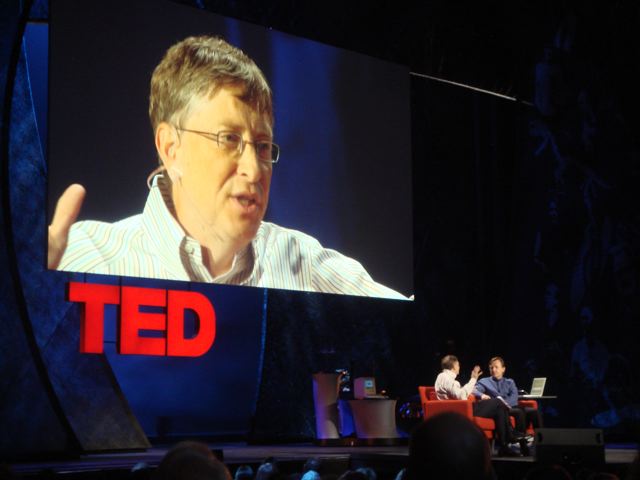
TED. For twenty-five years folks have gathered at an event called TED, short for Technology, Entertainment and Design. TED has always been an eclectic group of thinkers, makers, and doers. But three years ago, something changed. Until 2006, TED was an ultra-exclusive, invitation only event. A Who's Who in the world of Science, Technology, Architecture, Art, Music, and Innovation. TED was a private, almost secretive club that was held behind closed doors. TED's three day event was a series of what was known as TED Talks - eighteen minute presentations that share new discoveries, raise complex questions, and explore groundbreaking solutions. TED was private, some might say elitist, and attendance, in addition to being invitation only, was costly. In 2006, TED's new Curator, Chris Anderson, decided that the extraordinary knowledge and inspiration of the TED Talks could have a profound impact if they were shared more broadly. The decision to put the heretofore private talks online was something of a bombshell within the TED community known as TEDsters. Would attendance still be exclusive? Would the event have the same cachet and importance? Would the ability for TED to connect people and make things happen be diminished by opening the doors and starting to share some of content with web viewers. Three years later, the results are staggering and instructive about both the nature of the web and the potenial power of the web as connector of ideas and people. What happened is that TED Talks have become a web phenomenon. Some of the most highly viewed talks include: "Jill Bolte Taylor's powerful stroke of insight" and "Jeff Han demos his breakthrough touchscreen" and "Malcolm Gladwell on spaghetti sauce", the site now gets more than 250,000 unique visitors per month. And how has the sharing of content from TED impacted the event itself? Well, here too, there's extraordinary news. TED, which began today in its new larger home in Long Beach, California, is larger than any previous year. This year TED has a remote location in Palm Springs. And satellite video-viewing locations with TED associate members around the world. Simply put, the passion and knowledge of TED is now being distributed widely using the Internet, and the TED Talks are now part of a permanent and accessible archive that is online and available to viewers from Kansas to Kenya. More than 90 million views since the Talks have been posted. So, as folks gather in Long Beach to listen to talks from Bill Gates, and Juan Enriquez and P.W. Singer (all part of today's REBOOT opening session) - the challenges facing the planet will be front and center. But the emergence of a new connected world promises to move ideas faster and more widely than at any time in history.
At a time when ideas are needed to change the world, both the distribution and the wide interest in TED talks suggest that there is a hunger for knowledge, and an appetite for ideas that extends far beyond the Long Beach auditorium that will house the physical TED community for the next 3 days.
 //photo: Bill Gates on stage with TED curator Chris Anderson, in Long Beach California//
//photo: Bill Gates on stage with TED curator Chris Anderson, in Long Beach California//
